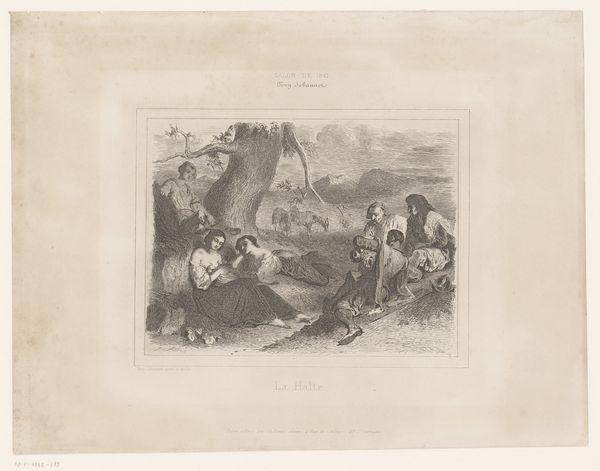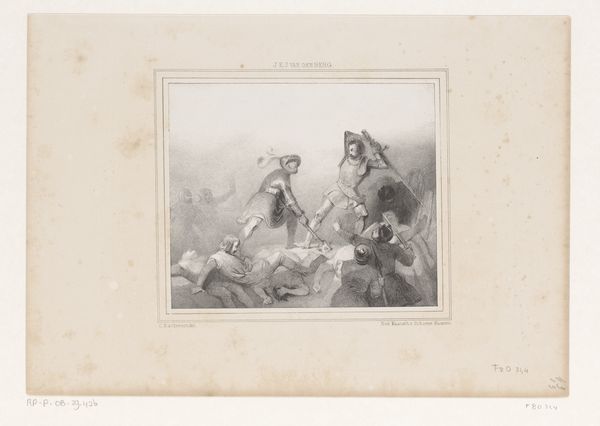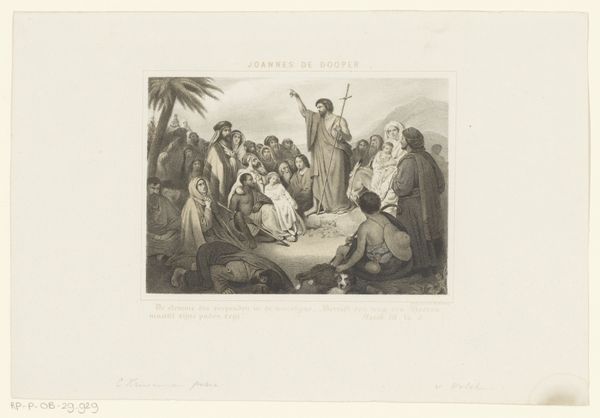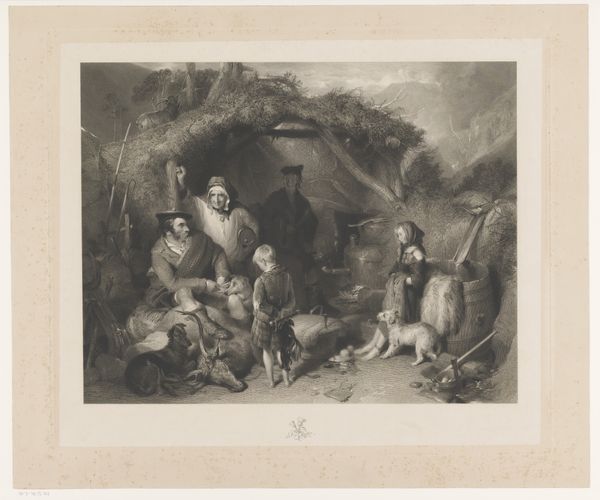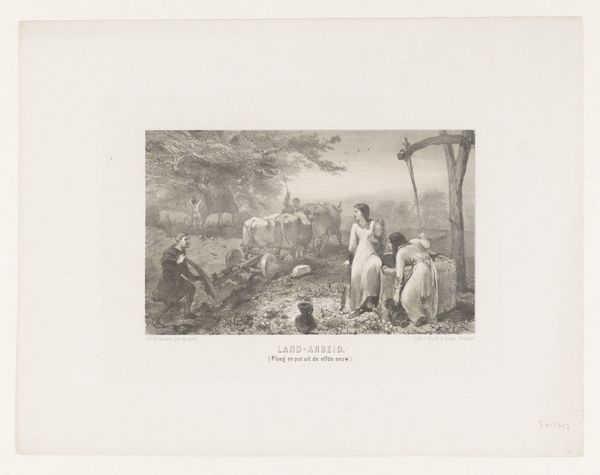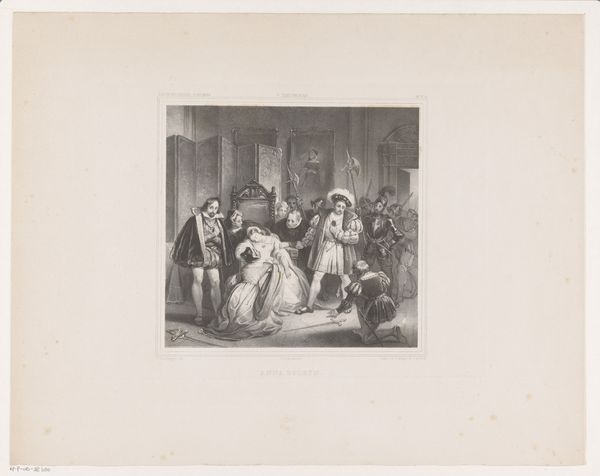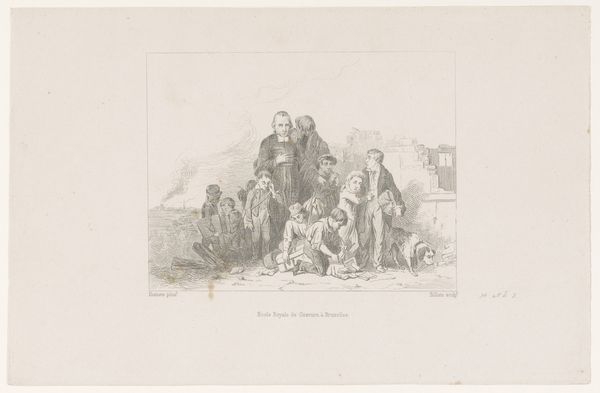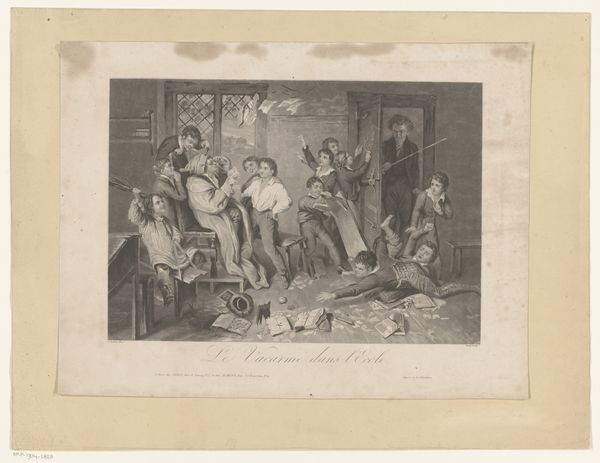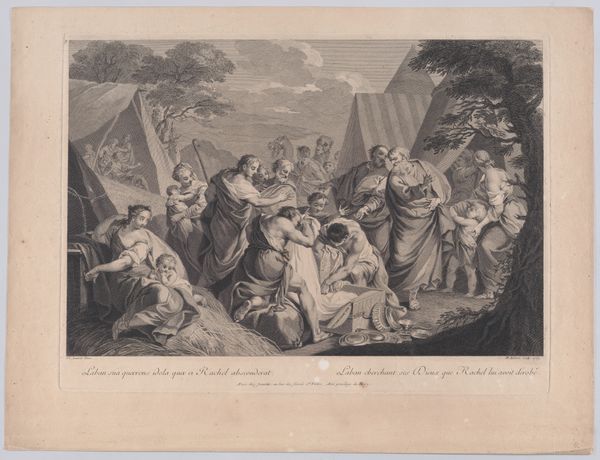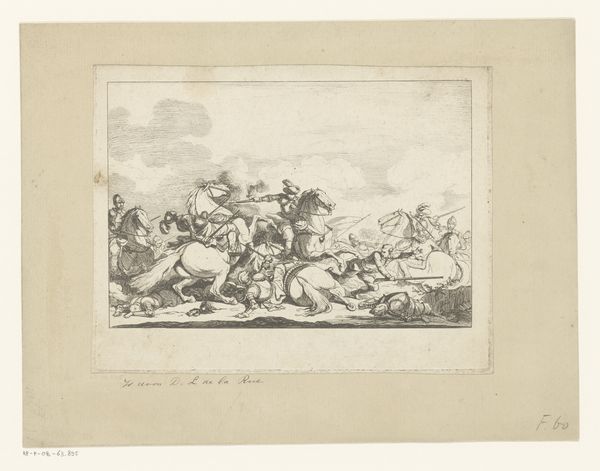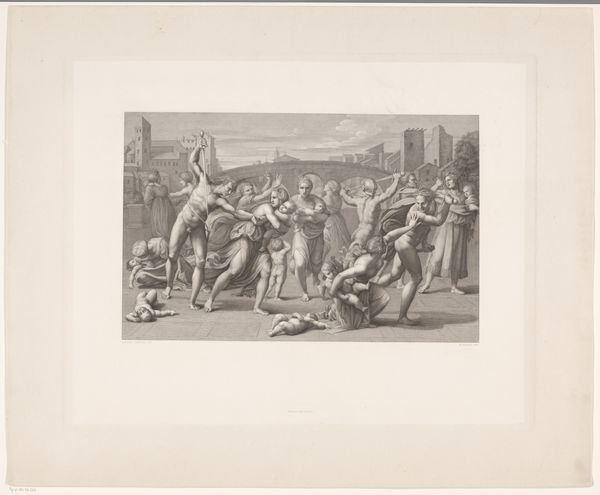
Dimensions: height 488 mm, width 634 mm
Copyright: Rijks Museum: Open Domain
Editor: Here we have "Gezelschap mannen en vrouwen op een heuvel," which translates to "Company of Men and Women on a Hill," an engraving made sometime between 1870 and 1899 by Frederic Charles Wentzel. The figures are posed so stiffly, but the details in their clothing are fascinating. What stands out to you about this piece? Curator: The cultural memory embedded in this seemingly simple genre scene is quite rich. Consider the seaside as a symbolic space. Throughout the 19th century, it transformed from a place of labor to one of leisure, health, and social interaction, particularly for the emerging middle class. Editor: So, the figures represent a shift in social norms? Curator: Precisely. Notice the presence of the dog. Dogs often symbolize fidelity, companionship, but here, amidst this display of social mobility, could it also hint at the trappings and performances associated with the newly affluent? And look at the title captions at the bottom. It is titled in three different languages suggesting perhaps the rising international tourist economy? What are your thoughts? Editor: It is as if the artist captured an aspirational lifestyle. But with such literal title translations. I hadn’t noticed how directly this reflects the commodification of health. Curator: Exactly. The engraving reveals a cultural snapshot—a specific moment in time when social identities and even well-being became intertwined with consumerism and leisure. The sea air, advertised to improve constitutions, functions as both physical remedy and status symbol. Editor: I hadn't considered how much this image spoke about that time! I will definitely approach engravings with fresh eyes from now on. Curator: Indeed. The symbolic language of images offers endless routes for interpreting cultural values across the ages.
Comments
No comments
Be the first to comment and join the conversation on the ultimate creative platform.
